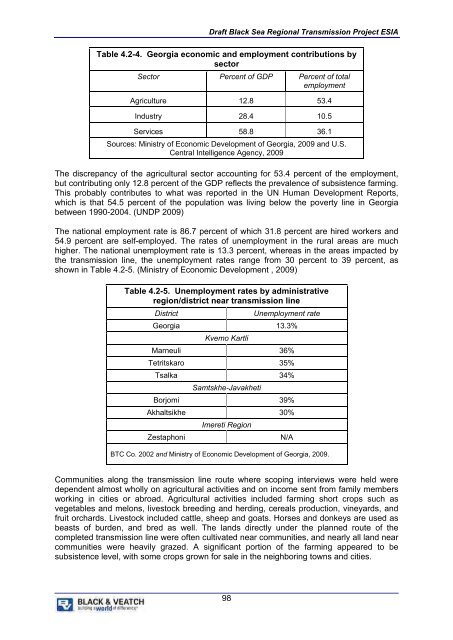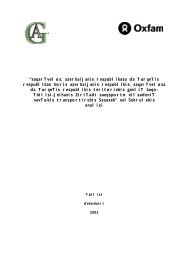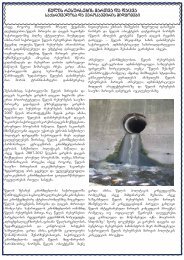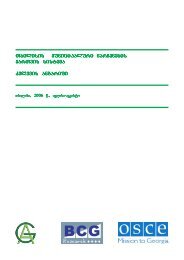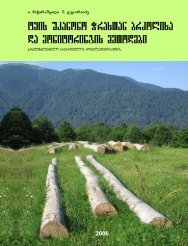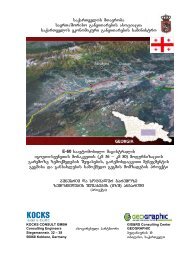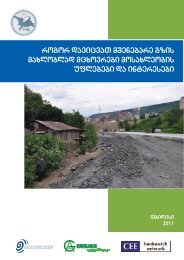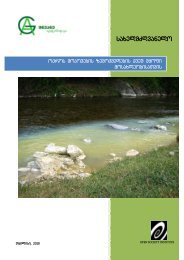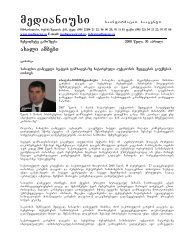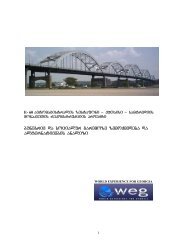Part I
Part I
Part I
You also want an ePaper? Increase the reach of your titles
YUMPU automatically turns print PDFs into web optimized ePapers that Google loves.
Draft Black Sea Regional Transmission Project ESIA<br />
Table 4.2-4. Georgia economic and employment contributions by<br />
sector<br />
Sector Percent of GDP Percent of total<br />
employment<br />
Agriculture 12.8 53.4<br />
Industry 28.4 10.5<br />
Services 58.8 36.1<br />
Sources: Ministry of Economic Development of Georgia, 2009 and U.S.<br />
Central Intelligence Agency, 2009<br />
The discrepancy of the agricultural sector accounting for 53.4 percent of the employment,<br />
but contributing only 12.8 percent of the GDP reflects the prevalence of subsistence farming.<br />
This probably contributes to what was reported in the UN Human Development Reports,<br />
which is that 54.5 percent of the population was living below the poverty line in Georgia<br />
between 1990-2004. (UNDP 2009)<br />
The national employment rate is 86.7 percent of which 31.8 percent are hired workers and<br />
54.9 percent are self-employed. The rates of unemployment in the rural areas are much<br />
higher. The national unemployment rate is 13.3 percent, whereas in the areas impacted by<br />
the transmission line, the unemployment rates range from 30 percent to 39 percent, as<br />
shown in Table 4.2-5. (Ministry of Economic Development , 2009)<br />
Table 4.2-5. Unemployment rates by administrative<br />
region/district near transmission line<br />
District<br />
Unemployment rate<br />
Georgia 13.3%<br />
Kvemo Kartli<br />
Marneuli 36%<br />
Tetritskaro 35%<br />
Tsalka 34%<br />
Samtskhe-Javakheti<br />
Borjomi 39%<br />
Akhaltsikhe 30%<br />
Imereti Region<br />
Zestaphoni<br />
N/A<br />
BTC Co. 2002 and Ministry of Economic Development of Georgia, 2009.<br />
Communities along the transmission line route where scoping interviews were held were<br />
dependent almost wholly on agricultural activities and on income sent from family members<br />
working in cities or abroad. Agricultural activities included farming short crops such as<br />
vegetables and melons, livestock breeding and herding, cereals production, vineyards, and<br />
fruit orchards. Livestock included cattle, sheep and goats. Horses and donkeys are used as<br />
beasts of burden, and bred as well. The lands directly under the planned route of the<br />
completed transmission line were often cultivated near communities, and nearly all land near<br />
communities were heavily grazed. A significant portion of the farming appeared to be<br />
subsistence level, with some crops grown for sale in the neighboring towns and cities.<br />
98


